The implementation of the formerly hardware-accelerated functions via Direct3D as a 2D level with the Z-position of the windows as the third (Z) level is not only the measure of how cleanly and efficiently the respective drivers have implemented these functions, but is also an indicator of throughput, as all of this must be supported almost entirely by the CPU. It wouldn't be a bad thing if Nvidia's developers could take a look at it.
And with the exception of blitting, i.e. the recopying of bitmaps in memory, which can still be mostly hardware-accelerated, all AMD maps here are easily up to clearly in front and it is certainly also a consequence of my time at that time Investigations from 2010, where I explicitly dealt with the performance of the then ATI cards in the 2D area. I am very reluctant to recall the long discussions with the driver-dev team in Toronto at the time, but i was finally able to get my way.
There were asdo from all sides, but the result in the form of new drivers was a kind of compensation. I still use the benchmark in slightly modified form (Ultra-HD) developed as "evidence" for the Dev team and it's nice how suddenly everything works(s). By the way, the initial value for the random generator is always the same, so that all test runs always represent the same content. All objects are located within the artboard, so no clipping is required.
Single benchmarks
First, we test the text output. In all cases, Cleartype was enabled. The font sizes are tested from 8 to 197 points in single steps with 500 runs each. Each alternate letter is created by chance and rendered in a randomly selected color at a random location. The font is "Arial".
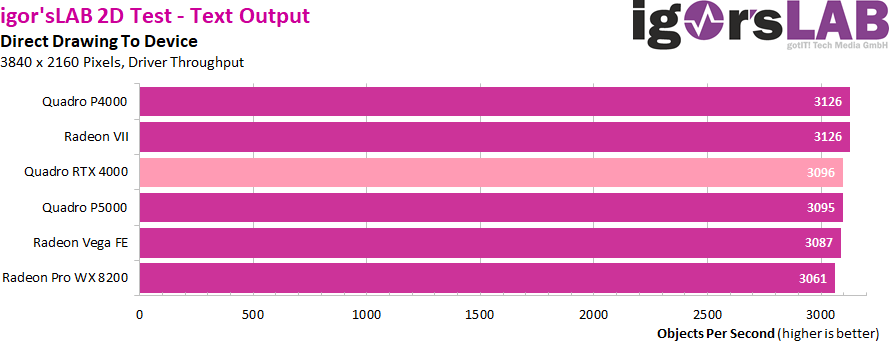
In this area, we test the output of lines. A total of 150,000 lines of random length and color are rendered at a random location.
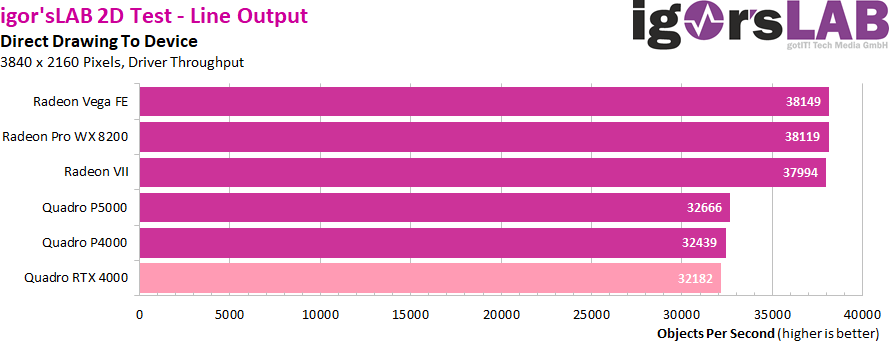
A total of 60,000 polygons with random scores between 3 and 30 are rendered, outline pen and optionally changing fill color or unfilled at a random position.
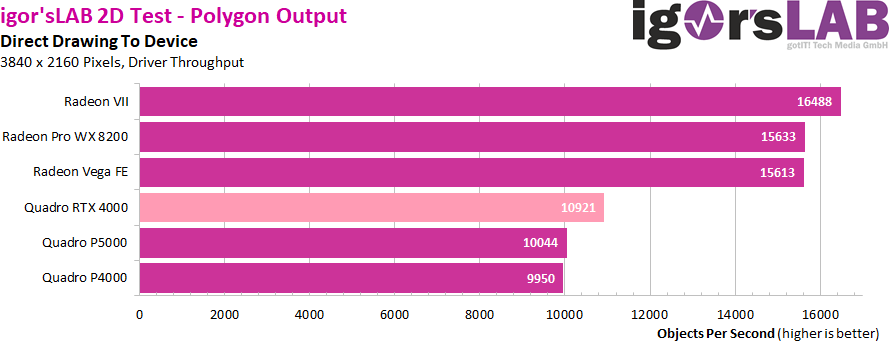
A total of 200,000 rectangles of random size and color are rendered at a random location. Outline color and fill color are the same.
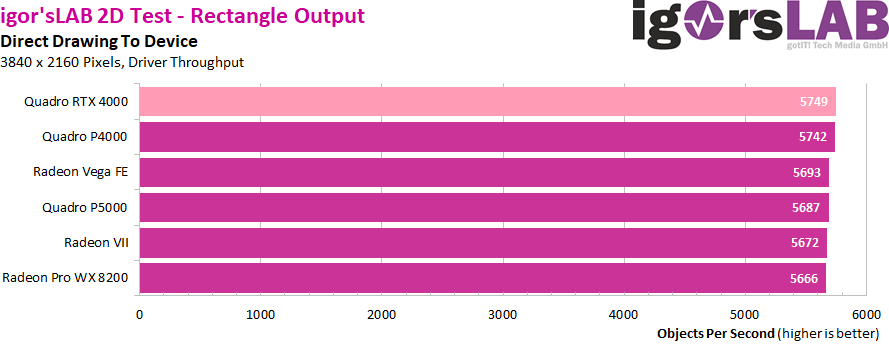
A total of 100,000 objects of random size and color are rendered at a random location. It alternate outline color, fill style, and fill color.
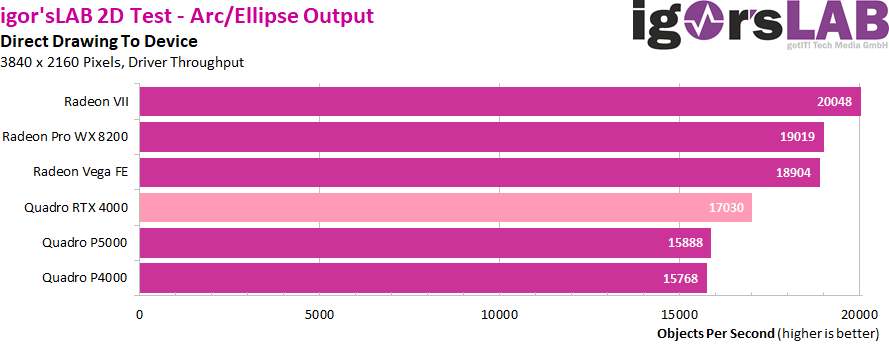
A total of 75,000 objects of random size and color are rendered at a random location. Outline color, fill style, fill color, and the respective vertices for the curved splines alternate.
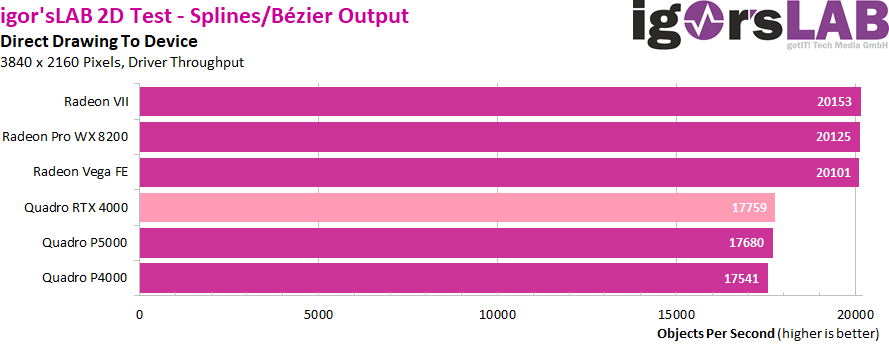
Blitting is the copying of bitmap content to other bitmaps. Here, device-dependent image sections are transmitted. A total of 50,000 image sections of random size between 1 x 1 and 500-500 pixels are copied and pasted (bleached) at a random location. It also alternates the copy style (copy, invert, paint).
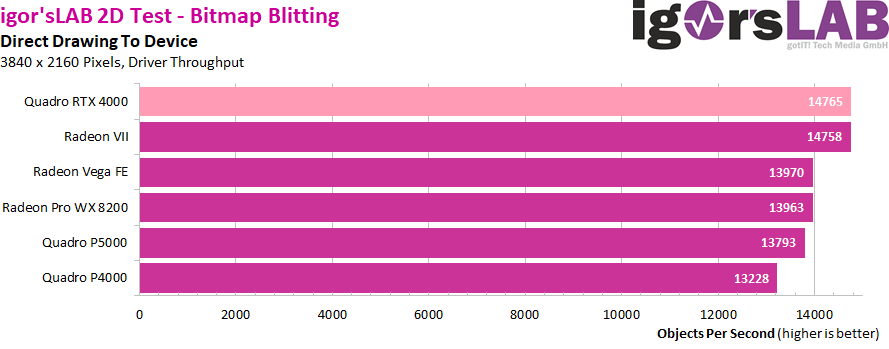
Stretching is a size-changing copy of bitmap content to other bitmaps. This allows device-dependent image sections to be transferred and resized in the output area. A total of 10,000 image sections of random size between 1 x 1 and 500-500 pixels are copied and resized (stretched) at a random location between 1×1 and 500×500 pixels. We alternate the copy style (copy, invert, paint).
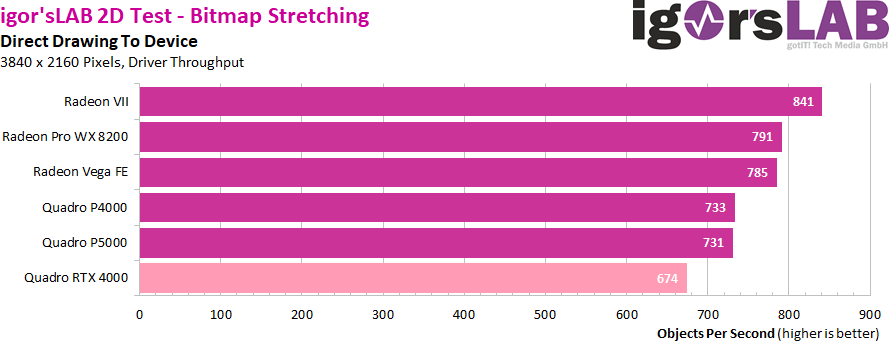
- 1 - Einführung und Datenblatt
- 2 - Tear Down: Platine und Kühler im Detail
- 3 - Visualize 2019, Arion, Luxmark
- 4 - Solidworks 2017
- 5 - Autodesk AutoCAD 2018 , Maya 2017 und 3ds Max 2015
- 6 - Creo 3 (M190)
- 7 - SPECviewperf 13
- 8 - GDI und Treiberdurchsatz
- 9 - Leistungsaufnahme, Lastspitzen und Netzteilempfehlung
- 10 - Takt und Temperaturen
- 11 - Lüfter und Lautstärke
- 12 - Zusammenfassung und Fazit































Kommentieren